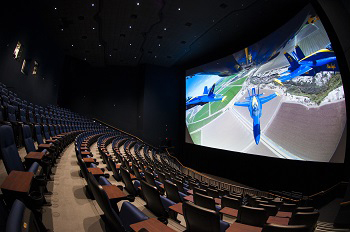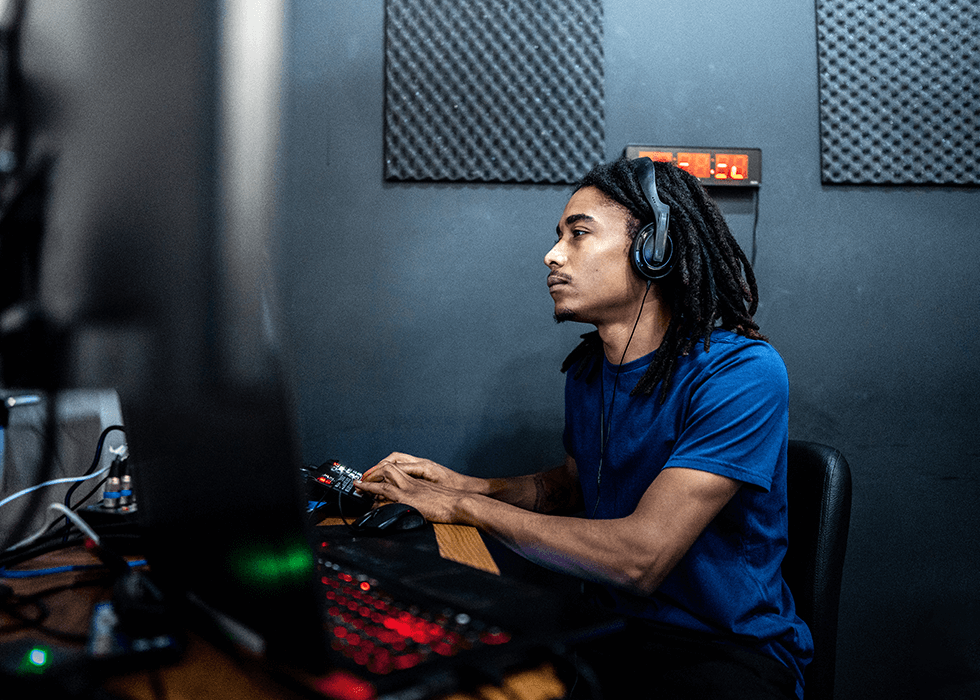Data Helps National Naval Aviation Museum’s AV Take Flight
Posted on Nov 15, 2017
By Dan Daley, Special to AVIXA During the last few years, the use of data analytics has transformed industries and professions from baseball to marketing with the power to see new patterns and connections. Data analysis techniques can also empower smarter AV design and purchase decisions. Recently, the National Naval Aviation Museum in Pensacola, Florida, used an array of data points to evaluate the costs related to one of its central attractions: the museum’s 325-seat Naval Aviation Memorial Giant Screen Theater.
During the last few years, the use of data analytics has transformed industries and professions from baseball to marketing with the power to see new patterns and connections. Data analysis techniques can also empower smarter AV design and purchase decisions. Recently, the National Naval Aviation Museum in Pensacola, Florida, used an array of data points to evaluate the costs related to one of its central attractions: the museum’s 325-seat Naval Aviation Memorial Giant Screen Theater.The theater is home to The Magic of Flight, a film tracing the history of aviation and highlighting the teamwork of the Blue Angels, the U.S. Navy’s acrobatic flight team. The existing projection system in the theater was impressive to experience but expensive to operate: The xenon-lamp projector cost in low six figures annually to lease, operate and maintain. As part of a planned facility-wide upgrade, Phillip Crabtree, Operations Manager for Visitor Attractions, started using data from the theater’s operations records to determine what, if any, system could cost effectively replace it and exactly what the numbers would be.
Data Comparison
Initially, Crabtree used a spreadsheet to log the numbers of the current projection system. The theater has an average admittance charge of $7.79 and is the main attraction at the museum, which as a federal historic site on an active military base has no general admission fee. One of the first points he noticed was that with 120,000 annual theater visitors, the projector’s operating costs accounted for nearly 10 percent of its gross revenues. These included the annual $100,000 projection systems lease fee, and the approximately $20,000 cost to replace its xenon lamps an average of three times a year. Other hard costs included specialized cleaning materials for the lens and some aspects of the projector, such as lint-free cloths and 99-percent-isopropyl alcohol, which cost several thousand dollars a year. Personnel costs were estimated to be about $50,000 a year for projectionists to run the system 9 a.m. to 5 p.m., 362 days a year. Finally, each film print cost approximately $28,000, with shipping costs of about $400 per print.
Chicago-based integrator D3D Cinema, which works with its sister company, large-format cinema content developer Giant Screen Films, also played a role in the data-driven decisions around the new projection system at the National Naval Aviation Museum.
Crabtree and D3D Cinema gathered and logged similar costs for other projection options via RFPs. Comparing the line items, the theater’s staff could project a savings of about $200,000 to $250,000 a year. This was based on lower or no lamp-replacement and other consumables costs, and the elimination of operators costs by using the highly-automated laser-based projector. Since all of the theater’s revenues go directly to the museum’s overall operating budget, any savings are viewed as operating profit, says Crabtree.
“Phil’s experience is not uncommon when it comes to the economics of small and mid-sized institutional giant-screen users,” says Derek Threinen, Vice President, Film Distribution and Business Development, Giant Screen Films/D3D Cinema. “We’re providing a combination of digital projection technologies, which these cinemas can own versus license, and that usually allows them to achieve ROI within two years.”
Threinen says the typical institutional user’s theaters are between 300 and 400 seats, which results in average savings of between $250,000 and $500,000, depending on the size and type of institution. Most of the savings come from eliminating licensing fees and print-related costs, but also from operational expenses, such as reduced labor and utilities.
Positive Outcome
Thirteen months since the renovated theater reopened, Crabtree says they achieved increased revenues, through cost reductions and increased attendance, of about $200,000. This includes a 30 percent reduction in electrical costs attributable to the shift to laser-based illumination, and an increase in attendance — aka the capture rate — of 5 percent, or about 8,000 patrons a year, drawn by word of mouth to an enhanced theatrical experience and adding over $62,000 to annual revenues.
“The reviews are very positive and audiences love the experience,” said Crabtree. “I read one that talked about the new projection technology and how spectacular it looks. The reviewer said he definitely recommends a visit to the theater,” reviews Crabtree directly credits for increased attendance.
These more than offset the specific costs related to the laser projector, which include a maintenance contract, with D3D Cinema, on the new projector, and nominal transfer fees for digital content. “This is net revenue for us and is money we’re not spending – that is a big deal for us,” Crabtree says.





